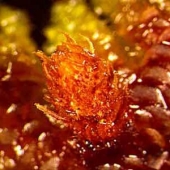Please select root levels for the menu
NZ Plants
Leafy liverworts
In leafy liverworts the eggs and sperm are most often formed at the base of leaves on the main shoot or on a short lateral branch close to the tip. Plants may be unisexual or bisexual.
Egg and sperm-producing structures
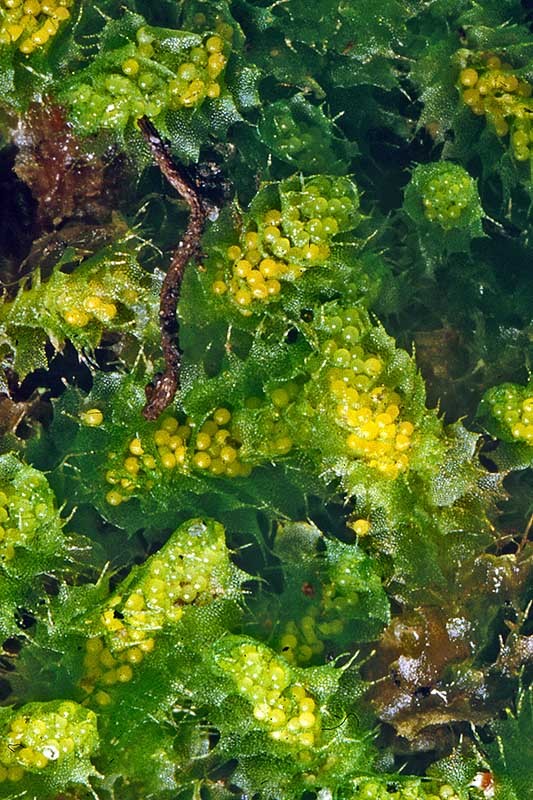
Goebelobryum ungicularis - In this liverwort sperm-containing antheridia (yellow) are formed in the axils of leaves.
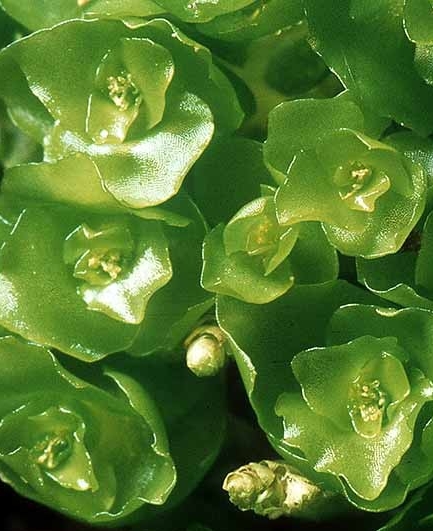
Haplomitrium gibbsiae - In this liverwort, egg-containing archegonia are formed at the tips of female shoots.
The capsule
The fertilised egg develops into a short-lived spore-forming structure known as the sporophyte. This is nourished by the gametophyte to which it remains attached.
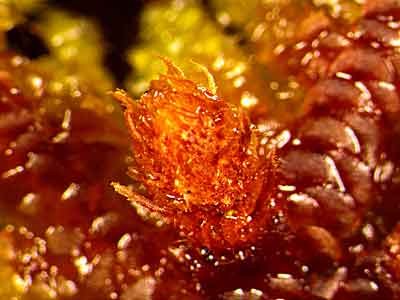
Lepidolaena taylorii - In this liverwort the stem forms a hollow outgrowth (coelocaule) with one or more egg-containing archegonia.
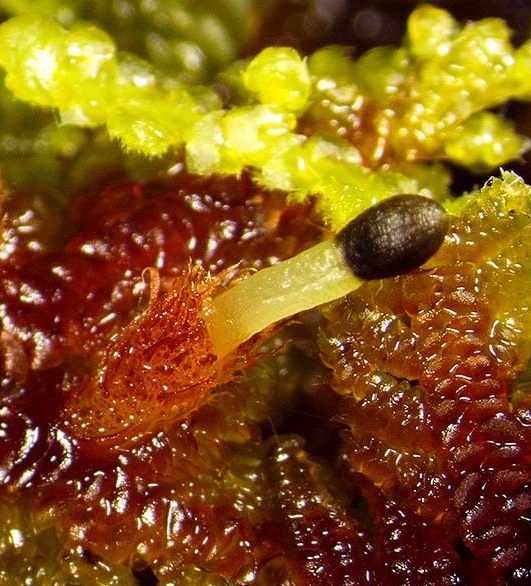
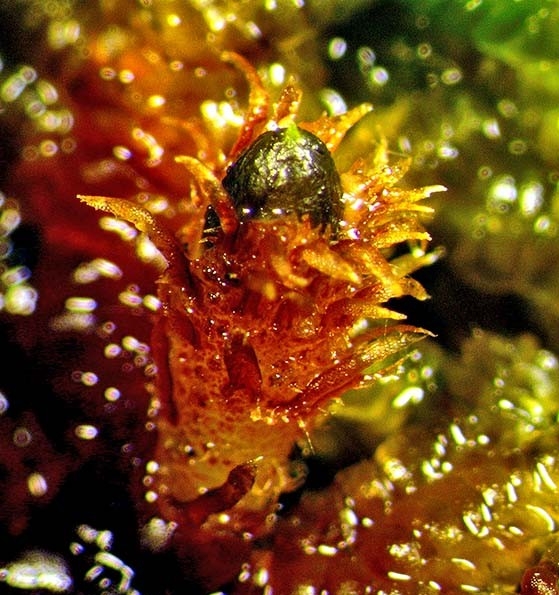
Lepidolaena taylorii - After fertilisation the embryo forms a capsule with developing spores
Lepidolaena taylorii - When the spores are ready to be released the cells below the capsule quickly elongate to form a fleshy pale stalk (seta) which raises the capsule up into the air .

